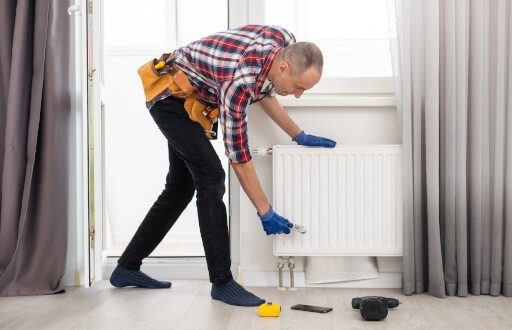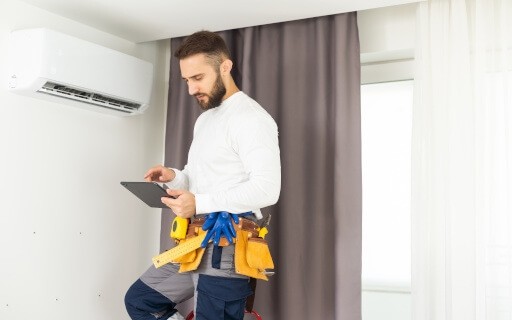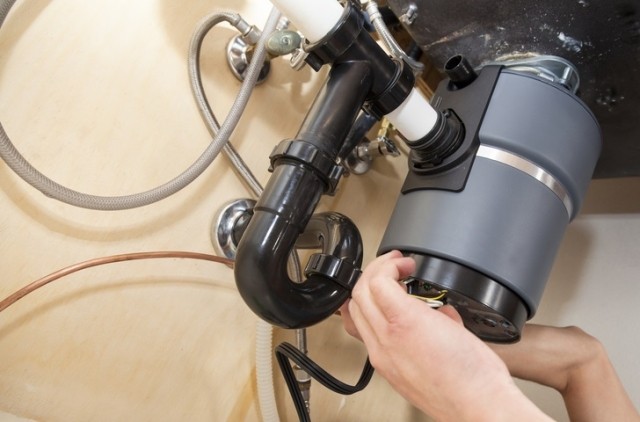Winter brings joy to so many. The holiday season and chilly weather are the perfect excuse to stay home and get together with loved ones. On the flip side, harsh winter weather can cause some costly issues for property owners and managers. The good news is that most maintenance issues can be avoided by properly winterizing your home or investment property.
How to Winterize Your Rental Property
Winterizing your rental property is a crucial step in preparing for the colder months. By taking proactive measures to protect your rental property, you can prevent potential damage caused by freezing temperatures, snow, and ice. This is not only beneficial for you as the landlord by avoiding costly emergency repairs and maintaining the value of your property, but by being proactive, you can also ensure a safe and comfortable living environment for your tenants. Through winterization, you can reduce the likelihood of maintenance issues, all while keeping your tenants happy and minimizing the chances of inconvenient disruptions during the winter season.
10 Ways to Winterize Your Rental Property
Before the chill of winter sets in, it is essential to take preemptive steps to safeguard your rental property. Below are 10 easy ways you can winterize your rental property so both you and your tenants can have a worry-free winter.
- Clean gutters
- Insulate and flush your water heater
- Adjust your ceiling fans
- Replace air filters
- Winterize windows
- Winterize doors
- Add insulation
- Get a programmable thermostat
- Check for exterior cracks
- Add a chimney balloon
- Bonus: Get a Home Energy Audit
1. Clean gutters
Cleaning gutters is one of the most important things you can do to winterize your property. If you don’t clean the gutters, rain can overflow and damage the foundation and the walls behind the gutters. Overflowing gutters can also cause dangerous icicles and ice dams to form, so making sure the gutters are free from leaves, pine needles, and other blockers is essential. It’s a simple and inexpensive way to avoid costly damages and injuries.
Make your life easier and invest in gutter guards, so all you have to do is brush the debris off the top of the guard. There are other tools that connect to shop vacs that go through the pipes themselves, so look around and see which tools will work best for you and your property. Remember that safety comes first. If the gutters on your property are unsafe for a ladder or other equipment, call in the professionals.
2. Insulate and flush your water heater
Did you know that water heaters can account for over 20 percent of a utility bill? It’s vital to make sure that the water heater is running efficiently to preserve its lifespan and lower the utility bill for you or your tenant.
A great energy-efficient upgrade is to get a water heater blanket and insulate your water heater’s pipes. You can get water heater blankets at any hardware store for less than $30 and install them yourself. Then, wrap the pipes with either a foam rubber sleeve or an insulated wrap. If you’re handy, you can easily install the insulation yourself.
Flushing your water heater should be added to your list of routine winterization maintenance. Water heaters collect sediment at the bottom over time, which makes the machine less effective. Flushing the water heater through the drain valve to ensure it’s working properly will make it work more efficiently.
These two cheap fixes will save a lot of money in the long run by cutting back on electric costs and increasing the lifespan of your water heater.
3. Adjust your ceiling fans
Ceiling fans aren’t only useful in cutting costs in the summer. You can use a ceiling fan year-round by switching your fans to spin clockwise. The clockwise spin will push warm air down. Most fans have a root switch at the top to make changing the direction easy, so make sure to either switch the fan for your tenant or remind them to switch it themselves. It’s possible to save about 15 percent in heating costs every winter by using fans in this way.
4. Replace air filters
Replacing air filters every two or three months in the winter will reduce the work your HVAC unit is doing, which reduces the utility bill, improves air quality, and extends the life of the HVAC unit.
There are a lot of different filters out there. Less expensive, thin filters won’t work as well for people with allergies. If allergies are an issue, more expensive 3M filters are best. Ask your tenant what they prefer.
5. Winterize windows
Winterizing windows is a crucial part of any winterization plan. Old, leaky windows can account for over 25 percent of an electric bill. Save your property’s HVAC from going into overdrive by making a few simple fixes to your rental property’s windows.
Pull back the trim of your window and caulk the area between the window and the frame. If you find rotten wood, use an epoxy wood filler to fix each spot. It’s also a good idea to install weatherstripping in the areas around your window for added protection from the elements. If your property is in a particularly chilly climate, consider installing insulation film or thick curtains for your renter.
6. Winterize doors
Like windows, doors with gaps around the frame can cause the energy bill to skyrocket. Slipping draft guards or door sweeps under any doors that lead outside will make a huge difference in lowering energy costs. After installing the draft guards, seal any cracks with caulk and inspect the weather stripping to see what needs to be replaced. You should not be able to see daylight through any part of a door.
7. Add insulation
You might already have insulation in the attic. Unfortunately, most attic insulation is subpar because many builders do the bare minimum in order to pass code requirements.
Here are some areas you may want to insulate:
- Elbow walls —These types of walls are usually left uninsulated and can let cold air inside.
- Added attic insulation —Even if you have insulation in the attic, you could add more and possibly save more.
- Basement ceilings —Basements are usually left uninsulated, but a lot of cold air can get in through the floor and ceilings.
Remember that fiberglass is the best insulation material and to be careful when installing. If you don’t feel comfortable doing it yourself, call a professional
8. Get a programmable thermostat
Buying a programmable thermostat is an investment, as they typically cost at least twice as much as a regular thermostat. However, you can make that money back with a lowered utility bill and a happy tenant. Even if your tenant is responsible for paying utility costs, a programmable thermostat will help them keep their utility costs down. A happy tenant will also likely be more willing to resign a lease!
9. Check for exterior cracks
A basic walk-around of your investment property or house can save you a lot of trouble. For example, animals or inclement weather may have started to cause damage to your property. Simply walking around and inspecting your rental property will allow you to catch these issues before they become major.
If you find any cracks, damage, or signs of wildlife, instead of just fixing the damage with some caulk, replace the trim or whatever has been damaged.
10. Add a chimney balloon
A chimney balloon could reduce a utility bill by 25 percent. A chimney balloon reduces drafts and keeps the heat from escaping. An added benefit is that the balloon could potentially keep pests from entering in through the chimney.
Bonus: Get a home energy audit
Some people need to pay for energy audits, but in other areas, home energy audits are free. In either case, a good audit provides you with actionable advice. Depending on the audit, you might be eligible for energy credits or reimbursements for energy upgrades you make to a property.
For instance, if you upgrade the windows at your rental property, you could receive an energy rebate.
To find out more about energy audits, check out the guides from the Office of Energy Efficiency & Renewable Energy.
Properly winterizing your home is in the best interest of every property owner. Even if your tenant is responsible for paying the utility bills, winterization techniques will keep your property and its appliances in top condition for years to come, leading to happy tenants and a longstanding home. As always, understand that no amount of preparation can prevent the occasional maintenance emergency. Give your tenants an easy way to submit maintenance requests online with Apartments.com. You will get a notification when a request is submitted, and you can update renters as the repair progresses.











